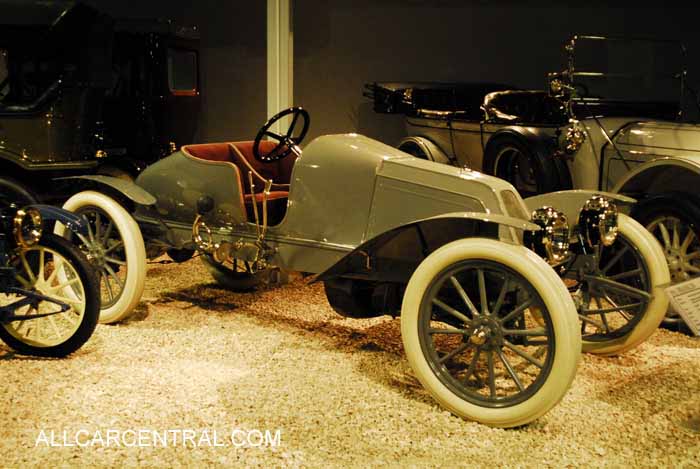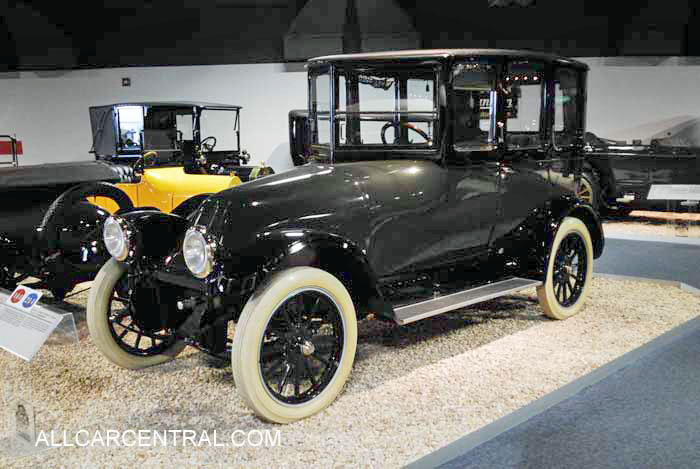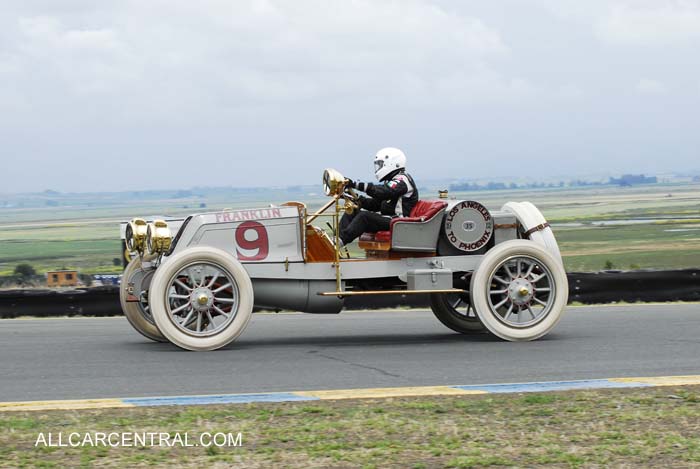When we talk about air cooled engines in motor cars the usual conversation centers around the German VW. However in reality there was, some thirty years earlier, a successful car based on the same principle made in Up-State New York from 1901 through to 1934 when national economics, forced the company to close shop. Name: FRANKIN... Location Syracuse N.AY. The actual auto production was under the banner of Franklin Automobile Inc registered in 1917.but they had been producing special cars to order for the previous fifteen years.
Franklin Averell Special Speed Car 1911
10 H.P. 4 Cylinder Air Cooled Engine
National Automobile Museum
Reno Nevada 2008

If you think about it air cooling makes a lot of sense and is/was somewhat less expensive than liquid cooling. With a very few exceptions all Motor Cycles depended on this principle and still do. Most of the early piston aero engines were cooled by air and achieved an incredible level of success both as fighter aircraft and as reliable transport carriers. To be precise in the latter year's assistance was given in the form of sealed liquid cooling to enable aircraft to fly at substantial heights but the simple flow of air over the engine was more than adequate for normal operation.
Back to the FRANKLIN and its success as a vehicle. The original idea was one of production economics if you did not need a liquid cooling system costs could be reduced, no need for a cooling radiator or an engine block that could carry water. Even below freezing the engine would operate and you had no need to use any anti freezing mixture. Reading the copy of a 1906 Franklin advertisement you can't help but wonder if any prospective buyer would really believe the content... Judge for your self:
Franklin Series 9-A 1917
30 H.P. 6 Cylinder Air Cooled Engine
National Automobile Museum
Reno Nevada 2008

"The Franklin engine does what no other engine ever did..It lets out the hot, used gases before they can over heat the engine. The air cool system is the most efficient way to hold the correct working tempture with the engine yielding its full ability. The extra advantage is that the weight of any water cooling system is now discarded such weight estimated to be in excess of 200 pounds. This saves fuel costs and equally important it saves tire wear. Franklin cars are priced to sell at between $1400 to $4000"
As a matter of interest the number of companies producing gas powered vehicles in the US in 1906 was 135...In Europe 19 including the UK who was one of the last countries allowing the Motor Car on the roads.
With an air cooled engine there were certain disadvantages like noise and the fact that the owner really had little control over the cooling process despite the claim to the contrary, but in the long run most units worked exceedingly well. Franklin offered both a four and six cylinder engine and by 1907 had a totally automatic ignition advance and retard, the first of its kind in the U.S. It took another twenty years before breaks on all four wheels were introduced despite the fact that manufacturers like Ford had introduced this safety system as early as 1916.
Looking back at the range of automobiles offered to the American public stopping power was not considered an important feature despite the fact that speeds in excess of 70 MPH could easily be achieved. However this changed in the 1920's mainly because the imports from Europe did feature full breaking systems on all wheels. The weakest point on any vehicle was the tires that usually had a limited life span and were at best adequate as long as you drove your car on a smooth surface however, there were limited sections of highway that offered this facility usually around large cities.
The average rural road was dirt based that turned into mud each time it rained. When you go to the movies and see a 1920's car chase across state lines in the rural south take this image with a large grain of salt, most rural roads were dust tracks and usually had large pot holes just to make the drive that much more exacting. It was the 1930's that saw the introduction of highways as we know them today created by the administration of FDR as work programs for the unemployed.
1912 Franklin Model D
Sonoma Historic Motorsports Festival 2011
Infineon Raceway 2011

This being the case it was quite incredible that in 1915 a Franklin was driven a total of 860 miles in first gear without over heating to prove that an air cooled power unit was reliable. The famous Charles Lindbergh purchased a Franklin in 1927 and was so impressed that he eventually owned four vehicles however this did not save the company and in 1934 the last Franklin, a V12 car, left the factory and the doors closed forever. It was claimed that this car was capable of a hundred miles an hour but this performance did not bring would be owners rushing to the sales dept quite the reverse. The depression certainly had a lot to do with the demise as it did with many other vehicle manufacturers and of course the suppliers who produced the parts that were assembled by these people.
The survival of such names as Ford and Morris in the UK was simple; they owned and produced virtually every item used in the manufacture of their cars and trucks. That way they could control the manufacturing process, when the market got slack or increased. If the demand this month was for a hundred engines that was all that the company made and the work force was put on a three day week. Both Ford and Morris insured that no matter how sales progressed they would ensure that each production employee took home money to put food on the table, no reliable worker was ever laid off...
This created a work force that was both loyal and grateful and of course kept out the Unions! Other manufacturers should have followed this policy but most did not and were often plagued with industrial disputes or strikes when the factory dismissed workers due to poor sales.
The design of the Franklin four cylinder engines was semi-copied by several manufactures in Europe for static power units, very much in demand in the agricultural industry in the 1930's, after the company closed its doors.
For some reason the air cooled power unit was never fully developed for use in motor vehicles, apart from VW. I suspect the problem was noise and like the two stroke engine was resented as a pollution contributor even before the Green Brigade came along.
The Marine industry did develop several air cooled outboard power units that were successful it seems that boaters are not that worried about noise, smell or smoke!!
In a way it was unfortunate that Franklin could not weather the depression as the car was a solid design and reliable. It was also one of the early American motor companies that deserved better.
Geoff Wheatley ©

BACK TO TOP